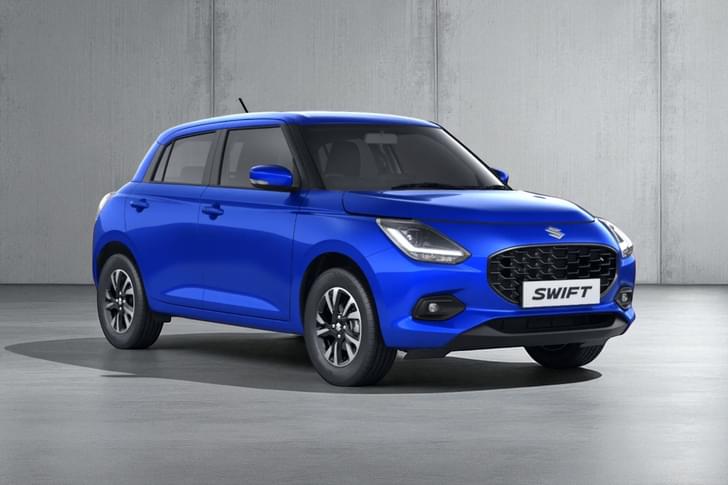UPDATE:
You can read our 2019 Hyundai Grand i10 Nios review here.
Hyundai has recently launched the second-generation of the Grand i10 hatchback in India called the Grand i10 Nios – it’s also known as the third-gen Hyundai i10 in international markets. There are more than a few areas where the Nios differs from the Grand i10, namely its dimensions, design and features. It is worth noting that the Korean carmaker will continue to sell the older Grand i10 alongside the Nios, though with rejigged variants and the removal of the diesel model. Here’s everything you need to know about the Grand i10 Nios before you read our review on August 29 at 12pm.

What’s it like on the outside?
Hyundai’s Grand i10 Nios sports a design that has links to pricier (and cheaper) Hyundai models, while still retaining its own identity. Starting with the front-end, the hatchback features projector headlights, a sculpted bumper and the brand’s signature ‘cascading grille’. On higher variants the Nios gets unique LED DRLs on either edge of the grille, along with projector fog lights. From the side, the overall design looks similar to that of the Grand i10 though features like the blacked-out C-pillar, shark-fin antenna, roof rails and 15-inch alloy wheels help differentiate between the two and adds a bit of flair to the newer car. Coming to the rear, the Nios looks decidedly different with a new bumper and tailgate design, along with new tapering tail-lights.

In terms of dimensions, the Grand i10 Nios measures in at 3,805mm in length, 1,680mm in width, 1,520mm in height and has a wheelbase of 2,450mm. This makes it larger than the previous Grand i10 in almost every dimension – the Nios is 40mm longer, 20mm wider and features a wheelbase that is 25mm longer.

What’s it like on the inside?
Hyundai has made sure that the cabin of the Grand i10 Nios is sufficiently different from its older counterpart, thanks to a new dashboard layout and design.

The Nios also gets a longer list of features – top-end trims feature a free-standing 8.0-inch touchscreen infotainment system with Android Auto and Apple CarPlay compatibility that is paired to a four-speaker Arkamys sound system. Instead of an analogue instrument cluster, there’s a 5.3-inch part-digital instrument cluster.

Higher-spec variants have a leather-wrapped steering wheel with media controls, segment-first wireless charging, automatic climate control, a USB charger at the front, rear AC vents, a cooled glove box, keyless entry with push-button start/stop, a rear parking camera, electrically adjustable and foldable ORVMs and a rear washer/wiper.

What engines will it come with?
Hyundai offers the Grand i10 Nios with both petrol and diesel engine options. The petrol motor is a BS6-compliant, 1.2-litre, four-cylinder unit that produces 83hp and 114Nm of torque. This engine is offered with both 5-speed manual and AMT automatic gearboxes that return ARAI-rated figures of 20.7kpl and 20.5kpl, respectively. The diesel unit is a BS4-compliant, 1.2-litre, three-cylinder motor that is tuned to produce 75hp and 190Nm of torque. The diesel engine is also offered with a 5-speed manual and a 5-speed AMT gearbox, both of which deliver an ARAI-certified mileage of 26.2kpl. Hyundai has confirmed that its U2 1.2-litre engine will be upgraded to BS6 form by February 2020.

What are its competitors?
Besides the Grand i10, which does overlap with the Nios in terms of prices, other competitors for Hyundai’s new hatchback include the Ford Figo and Maruti Suzuki’s Ignis and Swift. In terms of size – even with the increase in dimensions – the Grand i10 Nios is among the smaller cars in its segment as the Ford Figo trumps it on length, the Ignis is taller, while the Maruti Suzuki Swift is wider.
Talking about the engines, the Maruti Suzuki Swift and Ignis share the same 83hp, 1.2-litre petrol engine, though the unit in the Swift is BS6-compliant while the one in the Ignis is BS4-compliant, for now. Maruti will upgrade the Ignis’ petrol to become BS6-compliant soon. The Ford Figo gets two petrol engines – a 96hp, 1.2-litre unit and a 123hp, 1.5-litre unit – both of which are BS4-compliant, though Ford will update them to meet BS6 standards before the new emission norms come into effect in April 2020. The Grand i10 Nios’ 75hp, 1.2-litre diesel engine is matched by the Maruti Suzuki Swift’s 75hp, 1.3-litre diesel unit, though is out-powered by the larger 100hp, 1.5-litre diesel unit in the Ford Figo. All diesel options in the segment are only BS4-compliant, though Hyundai and Ford will update their engines down the line to comply with the BS6 emissions norms. Interestingly, the Hyundai Grand i10 Nios and the Maruti Suzuki Swift are the only cars in the segment to offer a diesel-automatic combination. As Maruti will not upgrade the Fiat-sourced 1.3-litre diesel motor to comply with the new norms, come April 2020, Hyundai will have quite an advantage in this segment.

As the Grand i10 Nios has been priced competitively – prices start at Rs 4.99 lakh for the base petrol and go up to Rs 7.99 lakh for the top-spec diesel, we believe it will be a compelling and well-rounded package. Considering its dimensions, powertrains and features on offer, it is expected to grab quite a bit of the Maruti Suzuki Swift’s market share (it is the current sales leader in the segment), in the coming months.








































